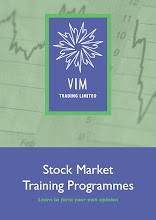
It is over a year since we posted this blog http://vimtrading.blogspot.com/2010/05/our-most-important-post-ever.html and the US 10 year yield has just gone below 3% again.
It has also been well cover in the media that Gross of Pimco has gone short. Maybe he was short back then and tried to pump his position by saying rates were going over 4%?
I think Gross will be right but even with all his insider information his timing has been way off. We called back then for a “flight to quality” and yields dropped to under 2.4% on the 10 year bond.
As I called before, the action on the Greek bonds was a precursor to what would happen in Ireland and it did. Back then Brian Lenihan was saying that the bond market was responding positively to their actions but it was just the calm before the storm that stole the remains of Irish self rule. The action in Europe is a precursor to what will happen in the US.
CNBC are shouting that Pimco has been wrong in their call to short the US Bond. All that is wrong is their timing. That may also make sense so when their short position come right they can say they took a lot of heat in the position and replay the CNBC clips to prove it.
So, without looking at any fundamentals of the US Economy and looking just at the chart of the 10 year bond yield.
The 30 year down trend in interest rates ended in December 2008.
Then there was the first wave up to 4%. Gross calls for rates to go above 4%. Vim Trading calls for “one more flight to quality” or out of the frying pan and into the fire by those managing the pensions of the US Middle Class.
Rates make a higher low in the last quarter of 2010 (wave2).
Rates moved up to 3.7% in Feb 2011 and have since dropped back to 3% as it has come out that Pimco are short and the media is making sure we all hear how wrong they are.
Wave 3 of 3 will begin in the coming weeks. Over the coming months we will have the waterfall decline in US long term bonds as we had in Greek and Irish Bonds.
Those short took half a percent of heat and will make a killing.
Markets take time to pan out and now the time is near for the US 10 Year Bond. This is where the masses will really get ripped and say goodbye to what is left of their hard earned, poorly invested pensions.
No point crying when the milk is spilled, but of course they will.




